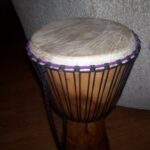Most of us know a rock and roll song when we hear it on the radio. However, most of don’t know exactly what distinguishes rock and roll from other forms of music.
Rock and roll began as a synthesis of rhythm and blues, country and gospel styles in the 1950s. Since then it has evolved into a style which hardly resembles its original form. Although the term was eventually truncated to “rock,” rock really constitutes a subgenre of rock and roll. It refers more to a more modern form rock and roll, which originated in the mid sixties.
Rock and roll essentially is a genre of popular music. A musical genre is a grouping of musical pieces which share a similar style. Rock and roll differs from other musical genres, in that it has widely divergent subgenres or styles. For example, acid rock and disco are both subgenres of rock and roll. However, these two subgenres are so different from one another that many people would dispute that they belong to the same general genre. They use different instruments and a vastly different methodology. In fact, it’s common for people to disavow disco as a form of rock, and claim that “acid rock” is “true” rock when this has no basis in fact. If you look more closely to both of these styles you will see that they have a great deal in common.
So what elements define rock and roll?
Time Signatures
Over the board, rock and roll is thought of as dance music. Not only do you dance to it, but you dance fast. Thus rock and roll favors a four-quarters or common time signature, often played with a heavy emphasis on eighth notes. However, there are some rock pieces written in six-eighths time, and a few pieces written in strange time signatures. For example, Pink Floyd’s progressive rock song “Money” is written in a seven-quarters time signature. Though the list of rock songs written in odd time signatures is long, the body of rock works is to large that they still constitute an extreme minority.
Three-quarters time or “waltz time” is the least commonly used time signature in rock and roll. In fact, there are probably fewer rock songs written in three-quarters than in seven-eighths. Billy Joel’s “Piano Man” for example, is written in a three-quarters time signature. Within the rock and roll genre, three-quarters time is usually considered “undanceable.” However, in the rare instances that it is used in rock, the three-quarters time signature is often sped up to such a degree that it becomes almost indistinguishable from six-eighths time.
A Strong Back Beat
Rock and roll depends heavily upon percussion. The percussion in most rock songs is tonally complex, but rhythmically simple. Generally it consists of eight eighth notes, played consistently and hypnotically in the background. Usually a drum kit with cluster of snares and a set of several different cymbals of different sizes are used. The drums are most commonly struck with sticks, but often brushes are used to achieve a different sound. Drums are often muffled. Brushes are particularly popular for striking cymbals, since this generates a softer sound which is characteristic of jazz. This differs strikingly from the tendency to “crash” cymbals in classical styles of music.
Rock percussion differs from classical forms of percussion, in that the drum section often begins to overwhelm the melody and harmony. It’s not at all uncommon for an uninteresting percussion section to “hijack” a rock song, and is probably the rock genre’s greatest flaw. The best rock songs allow the percussion section to rest on occasion, or use an unusual percussive pattern. For example, the rock band Supertramp, like many other seventies progressive rock bands, used percussion which is more varied than other rock bands. They have a tendency to use a sparser percussive beat during the introduction of a song than in the verses and chorus. Even then, the percussion in Supertramp tends to take a back seat to the melody and harmony. This is superior to rock bands such as Toto, which often permit a bombastic and overly repetitive beat to almost drown out the song.
Instruments
Rock and roll is notable for its extreme flexibility in its use of instruments. Almost any instrument which is used in music can be used in rock and roll. However, rock and roll has certain mainstays, including guitar, electric guitar, piano, electric piano, synthesizer, and the snare drum kit. Electric and electronic instruments in particular set rock and roll apart from other forms of music. Earlier forms of music, such as folk, orchestral and swing music, used acoustic instruments almost exclusively. It can honestly be said that rock and roll is a byproduct of the electronic age. In fact there are some songs and styles in rock music which can’t be performed properly without electronics.
Rock and roll is also different from other musical forms, in that every last one of its instrument mainstays could be abandoned, and the song would still be considered rock and roll. For example, Tiny Tim’s “Tiptoe through the Tulips” was played entirely on the ukulele, with orchestral accompaniment, yet is still considered by many to be part of the rock genre. Tiny Tim borrowed extensively from Tin Pan Alley alley songs which were popular in the late nineteenth and early twentieth centuries.
The progressive rock band The Moody Blues produced a symphonic rock album called Days of Future Passed. There are long passages in this album which are almost entirely orchestral. Typical rock instrumentation and rhythms play a minor role in this seminal work.
Similarly, there have been many a capella rock songs produced over the years. Billy Joel’s song, “The Longest Time,” for example, is sung almost entirely without accompaniment. The song has only a bass guitar accompaniment, and can be easily performed even without that.
Bizarre instruments often find their way into rock music. For example in the intro to “Telephone Line” by Electric Light Orchestra, a telephone rings in place of the customary percussion.
Ian Anderson of Jethro Tull is famous for his energetic flute performances. His flute solos were often lengthy, and punctuated by loud breaths and vocalizations, along with a great deal or perspiration. He had been influenced by many other genres, including classical, folk, and jazz.
A Lack of Dynamics
According to music theory, music has seven elements; melody, harmony, rhythm, form, texture, medium and context. Other elements also have to be examined to determine whether or not a piece of music is “good.” When music is too uniform, and lacks variety, it isn’t generally considered to be “good music” within the field of music theory. For example, the tempo should vary throughout the piece. Also, the dynamics should change. For example, in quality music, it’s not at all uncommon to see the piece veer from pianissimo (very soft) to fortissimo (very loud) and back again within a relatively short space.
Rock and roll violates this principle on a regular basis. It frequently exhibits almost a total lack of dynamic variance. As a result, we’ve ended up with a huge library of rock songs with only one speed and one volume. While this can be fun to dance to, it an also be boring. I have to count this element as rock and roll’s achilles heel.
It’s also why I have to count progressive rock as a superior form of rock. Since progressive rock isn’t intended for dancing, it’s free to express musical forms which dance music is forced to reject. You’re much more likely to hear dynamics such as ritardando, accellerando, crescendo and decrescendo in progressive rock than dance styles such as disco, soft rock, electronica or techno. On the rare occasion that dynamic variance is used in most forms of rock, such as contemporary pop, only crescendo was used. The song would start soft, and gradually build until volume levels were off the chart. George Michael’s song “Faith” uses this pattern. Once it reaches its peak, it simply is incapable of coming back down again.
Rock and roll was often rejected as “noise” by older generations during the fifties. Many people have tried to claim that rock and roll was disliked because it was popular music, but this doesn’t follow. After all, big bands were popular, as was crooning. Popular music in the thirties and forties not only had a strong following, but was also considered “good” music by many. Rock and roll was often demeaned as “bad.” I believe that a lack of dynamic variance was very much at the heart of this rejection. Dynamic variance is an essential element of almost all classical styles of music. Eliminating dynamics creates a song which is obnoxious and irritating to the nerves.
Even though rock and roll are well accepted today by almost all generations, we can still look at dynamic variance to help make the distinction between “good” rock and “bad” rock.
Borrowing from Other Genres
Rock is interesting in that it almost doesn’t matter how a song was originally written. Almost any song can still be adapted to rock and roll. For example, it has become a popular practice to adapt classical pieces to rock and roll. I have personally adapted songs to rock and roll very easily by simply changing the instrumentation in a MIDI file, and then adding a rhythm section. I did this with the first movement of Vivaldi’s Winter, from the Four Seasons, as well as the third movement of Summer.
“A Fifth of Beethoven” was a disco arrangement of Beethoven’s fifth symphony, which enjoyed enormous popularity in the late seventies. It was featured in the film “Saturday Night Fever,” and also appeared in the film’s soundtrack.
More recently, the rock group Banya produced a song called “Beethoven Virus,” which is a remix of Beethoven’s piano sonata number 8 in C minor, opus 13, “Pathetique.” This song was developed for a coin-operated Korean dance game called “Pump It Up: The Perfect Collection.
Yngwie Malmsteen also enjoys borrowing from classical music, playing songs such as Bach’s Air on a G String on the electric guitar without accompaniment.
There has been an incredible popularity recently for amateur musicians to produce rock versions of classical songs and to post them on video sites such as YouTube. Several of these have gone viral, including JerryC’s electric guitar version of Pachelbel’s Canon. Electric guitar versions of Mozart’s Turkish March are popular on YouTube, as are electric guitar versions of Moonlight Sonata and the aforementioned Air on a G String.
Rock also borrows heavily from other genres. For example, German artist Lou Bega’s “Mambo No. 5” is almost straight mambo, except for the pumped-up beat. The song is a remake of Perez Prado’s 1952 version and features samples from the original.
Similarly, country rock has enjoyed a rollicking popularity in the states. Artists such as the Eagles and Alabama borrow extensively from country, yet their work cannot really be described as pure country. They are credited with making country music palatable to mainstream audiences.
Discordance and Experimentation
Rock and roll is one of the few genres to make extensive use of discordance. The only other musical style to use dissonance to this degree is contemporary classical. For example, there is a lot of disharmony in the works of Aaron Copland. Like many rock and roll artists, Copland incorporated jazz and folk elements into his compositions. Experimental music often used non-musical elements, or unusual ways of creating music. For example, Henry Cowell’s compositions were meant to be played on the piano by plucking the strings directly, rather than playing on the keyboard. John Cage used “prepared pianos” which had objects between the strings to alter the sound they made. At times he incorporated objects like radios and toys into his scores.
Many progressive rock artists also have unusual ways of using instruments. Progressive violinist Darryl Way of the band Curved Air would sometimes strike the strings and the back of his violin with his bow. This is very similar to experimental music’s approach toward instruments.
Rock and roll is unique among all the different genres of music. It is unparalleled in its popularity and its difference from other genres, yet at the same time is amazingly varied. I believe that there is a need to recognize rock as an art form, and with that in mind, to try to produce high quality rock music.
Sources:
Uncredited, “Mambo No 5 (A Little Bit Of) by Lou Bega.” Songfacts. URL: (http://www.songfacts.com/detail.php?id=7789)
Percy Goetschius, “Lessons in Music Form.” Project Gutenberg. URL: (http://www.gutenberg.org/files/19354/19354-8.txt)
Uncredited, “IB Music: Introduction.” Wikibooks. URL: (http://en.wikibooks.org/wiki/IB_Music/Introduction)
Multiple Authors, “Public performances: music always too loud?” Ask E.T.
Uncredited, “Pump It Up: The Perfect Collection.” GameFAQs. URL: (http://www.gamefaqs.com/coinop/arcade/review/R55898.html)
Rodney Quill, “Jethro Tull Biography.” The Official Jethro Tull Website. URL: (http://www.j-tull.com/press/tullbiolong.PDF)
Uncredited, “The Longest Time by Billy Joel.” Songfacts. URL: (http://www.songfacts.com/detail.php?id=5512)
Uncredited, “Days Of Future Passed The Moody Blues.” Superseventies. URL: (http://www.superseventies.com/moodyblues1.html)
Gary Gold, “Tiny Tim.” In Music We Trust. URL: (http://www.inmusicwetrust.com/articles/30r30.html)
Uncredited, “History Essay:
Rock ‘n’ Roll in the Fifties.” The Rock ‘n’ Roll Zone. URL: (http://rocknrollzone.com/history/rockr50s.html)
Harry Hepcat, “History of Rock and Roll.” Harry Hepcat. URL: (http://harryhepcat.com/history.htm)
D.K. Peneny, “The History of Rock ‘n Roll.” The History of Rock ‘n Roll. URL: (http://www.history-of-rock.com/)
Dan Lasley, “Time Signatures – Bass for Beginners # 17.” Guitarnoise.com. URL: (http://www.guitarnoise.com/article.php?id=374)
Uncredited, “Money by Pink Floyd.” Songfacts. URL: (http://www.songfacts.com/detail.php?id=1689)
Will Swanson, “Beautiful Noise.” Contemporary Aesthetics. URL: (http://www.contempaesthetics.org/newvolume/pages/article.php?articleID=464)
Uncredited, “Aaron Copland.” PBS. URL: (http://www.pbs.org/wnet/americanmasters/database/copland_a.html)
Uncredited, “Henry Cowell.” G. Schirmer, Inc. URL: (http://www.schirmer.com/default.aspx?TabId=2419&State;_2872=2&ComposerId;_2872=297)
Allan Kozinn, “John Cage, 79, a Minimalist Enchanted With Sound, Dies.” The New York Times. URL: (http://www.nytimes.com/learning/general/onthisday/bday/0905.html)
Piero Scaruffi, “Curved Air.” The History of Rock Music. URL: (http://www.scaruffi.com/vol3/curvedai.html)
Fusso, “Curved Air.” YouTube. URL: (http://www.youtube.com/watch?v=_u6OFTZCRAY)







